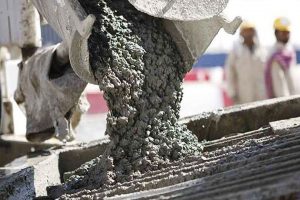By Justine Irish D. Tabile, Reporter
THE US tariffs imposed on Vietnam could divert Vietnamese cement to Asian markets, adding to the oversupply and pressuring Philippine cement manufacturers, an industry group said.
Citing a report, Cement Manufacturers Association of the Philippines, Inc. (CeMAP) President John Reinier Dizon said Vietnam is the second most important supplier of cement and clinker to the US.
“The 46% tariff imposed by the US on Vietnamese imports — one of the highest announced by the US — could significantly curtail Vietnamese (shipments to the US),” he said at a Tariff Commission hearing on Monday.
The hearing was considering the imposition of definitive safeguard measures against imports of ordinary Portland cement and blended cement from various countries.
He said that the US tariff could increase the supply of cement in the region, adding to the problems faced by the Philippine cement industry, which is experiencing low-capacity utilization in the face of competition from imports.
“There is increasing oversupply in the region as cement demand in China continues to be subdued. China is a major export market of Vietnam,” he added.
He estimated Vietnamese capacity at 123 million tons and domestic demand at only 65 million tons.
Similar imbalances apply to Indonesia and Thailand, he said.
Philippine cement manufacturing capacity was 51 million tons last year, against estimated demand of 35 million tons.
“The domestic cement manufacturing is geared up to serve both public and private cement demand. The key challenge, however, is capacity utilization,” said Mr. Dizon.
“Our estimate last year is that cement manufacturers were only able to produce 27 million tons. That is approximately 53% capacity utilization. That is quite concerning because the industry is very capital intensive,” he added.
He said cement imports by the Philippines amounted to 7.6 million tons last year.
“That is significant because if we compare 2019 to 2024, that is more or less a compound annual growth rate of 8%, which is quite worrying,” he said.
“Most of these imports are actually originating from Vietnam, although there are also some from Japan and Indonesia, and even China in prior years,” he added.
He said the Philippines is now the third-largest importer of cement after Bangladesh and the US.
The increase of imported cement in the last five years has resulted in a 42% operating loss among manufacturers here and a 24% decline in production volume, CeMAP said.
The Tariff Commission’s formal investigation into safeguard measures against cement imports follows provisional safeguard duties imposed by the Department of Trade and Industry (DTI) in February.
In an order, the DTI imposed provisional safeguard duties of P400 per metric ton or P16 per 40-kilogram bag on imports of ordinary Portland cement and blended cement.

